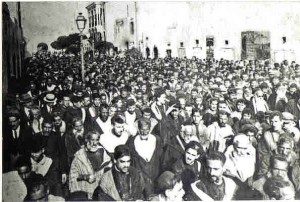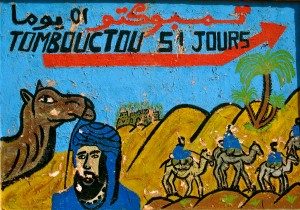Essaouira owes much of its past, present and future to its situation on a bay sheltered from the fierce trade winds of the Atlantic Ocean by an archipelago of small, rocky islands. Towards the end of the 18th century, Sultan Sidi Mohammed Ben Abdullah (Mohammed III) created a strategic role for Essaouira in his new trade policy oriented towards the Atlantic. He instructed the construction of the Kasbah (King’s Quarters) and the Skala fortifications which became the basis for the medina (old city) we see today. He ordered the closure of Agadir harbor, further south, and effectively routed a large amount of trade between Europe and West and Central Africa through his new port. The Sultan was the first Head of State to recognize US Independence in 1776, thereby creating a strategic linkage in support of his trade objectives in Morocco.
Tag: Jewish Morocco
There is a much-photographed sign in Zagora, in the spectacular Draa Valley in Morocco. Beside the image of a blue-swaddled desert nomad is written: “TOMBOUCTOU 52 JOURS.” The journey is considerably quicker today, but if you go by camel, it probably still takes 52 days. Zagora is a popular starting point for trips on camel back into the Sahara Desert and this famous sign gives some indication of the significance of this area back in the mists of history.


